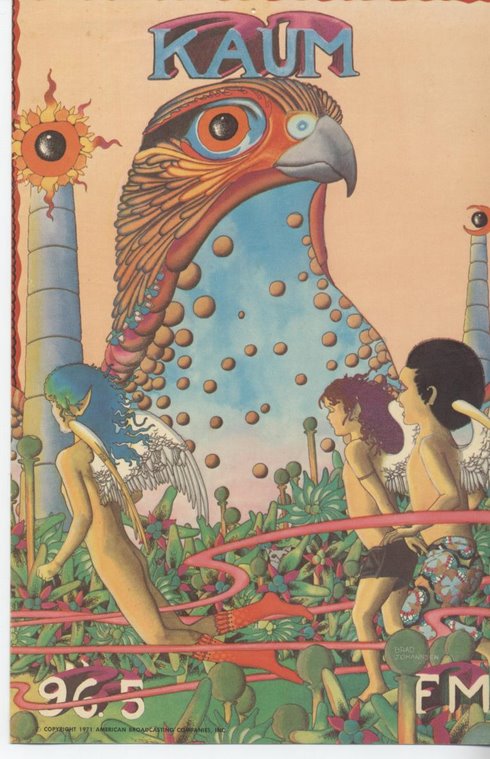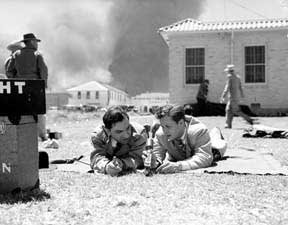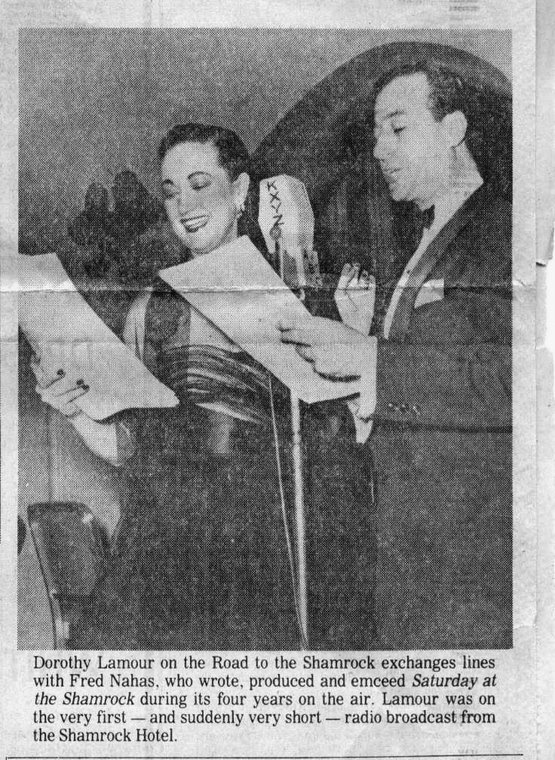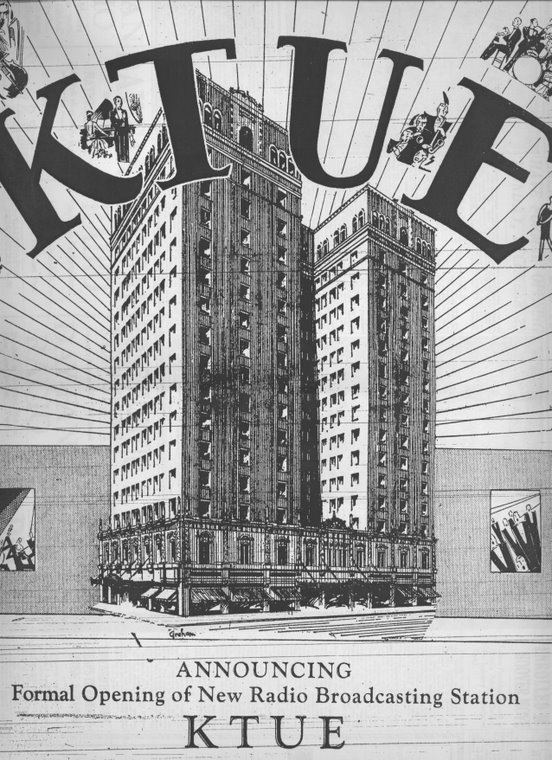KFUL, Galveston, The Community Station - 1924-1933 - Part 2
See Part 1 here.
More reports of distant reception continued to be received. On February 10, 1927, the paper reported the station had received a letter from Mission House, Nukulonpa, Panga, in the Friendly Islands, estimated to be as much as 15,000 miles away, where a broadcast by KFUL had been received on January 18th.
On the 19th of February a big squall blew through wrecking planes at the air field, damaging houses and businesses and knocking down the KFUL antenna. The squall affected a wide swath of Texas and Louisiana and reports from as far away as the Valley mentioned the incident. A temporary aerial was put up the next day.
Rev. Raimundo De Ovies of Trinity Episcopal, who had delivered a sermon on the very first broadcast of WHAB, Galveston’s first radio station in 1922, became an announcer at KFUL and the youth group at his church organized a regular Sunday evening program featuring youth groups from churches all over the island. Fred Richardson and his California Syncopators, in town appearing at the Winter Garden, made regular appearances on the station and KFUL station artist ‘Happy’ made an appearance at the opening of a new Star Electric Shop, pawing the ivories and singing ‘the blues’ it was reported. It isn’t clear if ‘Happy’ was a mascot or an actual person but a couple of months later the paper reported on the opening of the Airdome Dance Pavilion, 25th and Boulevard (what we now know as Seawall Boulevard) where KFUL broadcasting star ‘Happy’ Roy Thomas was to be the manager.
‘Radio’s Latest Marvel’ - hypnotism by radio - hit the Galveston airwaves in late March, 1927, when Noah the Great came to town to demonstrate his skills. A booth was set up at Joyland Park where a woman was going to be put under for 48 hours and made to perform several acts before going to sleep. Men were going to be made to ride bicycles and perform tricks and the public was invited to stop by the park to view the demonstrations.
A report in the paper in April claimed bathing crowds at the beach had been breaking all records for so early in the season with a large group from Hamilton, Ontario, Canada and others from Oklahoma and Kansas reported. Efforts of the Beach Association, the Chamber of Commerce, and the power of KFUL were credited.
In May, 1928, new management took over the station. Will H. Ford became the new station manager, Art Johnson of Chicago became announcer and station director, Jack H. Rogers was named as pianist and Roy Cole from Oklahoma City became engineer, apparently replacing George Roy Clough. Goggan’s named a new head of it’s radio department, too, Bernard McComb. An all night program was scheduled for May 29 to launch the ‘new’ station, starting at 8:15 in the evening and running until daylight. Many Galveston performers took part.
The Colorado Joy Boys, who played Hawaiian music, were in town and had a regular daily slot at 12 Noon. They had recently been a big hit on WBAP.
Will Ford was an insurance man and was closely allied with the W.L. Moody, Jr., interests on the island. On the 27th of February, 1929, The News carried a big story about the new Buccaneer Hotel, a project of Moody, getting the final touches at 23rd and Boulevard and revealed KFUL was to have brand new studios on the second floor, which is where the lobby was located.
This postcard on eBay shows the new hotel which has since been demolished. The studios were located on the east end of the building (right side). There were also several meeting rooms on the second floor and my understanding is that there was a picture window into the studio from one of those meeting rooms but not from the lobby itself.
The station was already collecting equipment for the new facility but before the hotel was completed a big fire broke out at Goggans in the second week of March. Traffic was backed up all over the island as fire equipment and onlookers converged on the scene. Damage was said to total $80,000 from the fire which was believed to have started in the Goggan’s workshop on the 3rd floor, next to the radio station. KFUL was practically a complete loss and the Palace Theatre, on the ground floor, suffered extensive water damage. Draperies and other soundproofing in the studio were thought to have accelerated the fire. The transmitter, on the roof, was inaccessible but believed to have been destroyed. Equipment for the new facility had also been lost. It was the 2nd fire in a month at Goggan’s.
Will Ford announced within a few days the station would be back on the air in 60 days from the new facilities in the Buccaneer and would be broadcasting with 1000 watts. It was estimated it would cost $20,000 to get the station back on the air. In the interim, a few regular KFUL programs were picked up by KFLX.
Ten days after the fire, Ford filed for the office of Commissioner of Finance and Revenue for Galveston and the campaign featured charges by his opponent that he and the Moody interests had ‘appropriated’ Galveston’s community radio station and were trying to 'get a stranglehold' on Galveston. In response, Ford claimed the the Rotary Club and Chamber of Commerce, which had been managing KFUL at a loss, had come to him and asked him if he would take over. After consideration he had agreed to take the job and continue to operate the station at a loss. He said he was paying the full cost of the new studios out of his own pocket.
In the meantime in early April the Federal Radio Commission released it’s decision on a petition by KTSA, San Antonio, and KFUL to each be assigned their own frequencies. KTSA had applied to continue on 1280 kilocycles, which the two stations had been sharing since National Radio Allocation Day in November, 1928, and KFUL had applied for 1120 kilocycles (and 1000 watts). The FRC ruled the two stations were to continue to share time on 1280.
By the end of June, 1929, KFUL was once again ready to take to the airwaves. A big gala opening was announced for Monday, June 19, with a 8 hour program that would start at 7:15 pm and the public was invited. Pat H. Wilson, Jr., was the new station announcer and representatives from KTSA, WRR, KPRC and KWKH would be taking part. The broadcast would also include a remote from the Shrine Temple. Six days later another new announcer was introduced. Pvt. C. J. Simmons, with the Third Artillery Group at Fort Crockett, was added to the staff. He had only recently been assigned to Fort Crockett from California and he was said to be known to radio listeners in the West for his sports announcing. He would work evenings at the station using the air name Ace Simmons.
This postcard showing the station orchestra in the studio at the Buccaneer could have been taken anytime after June, 1929.
Continue to Part 3.










No comments:
Post a Comment